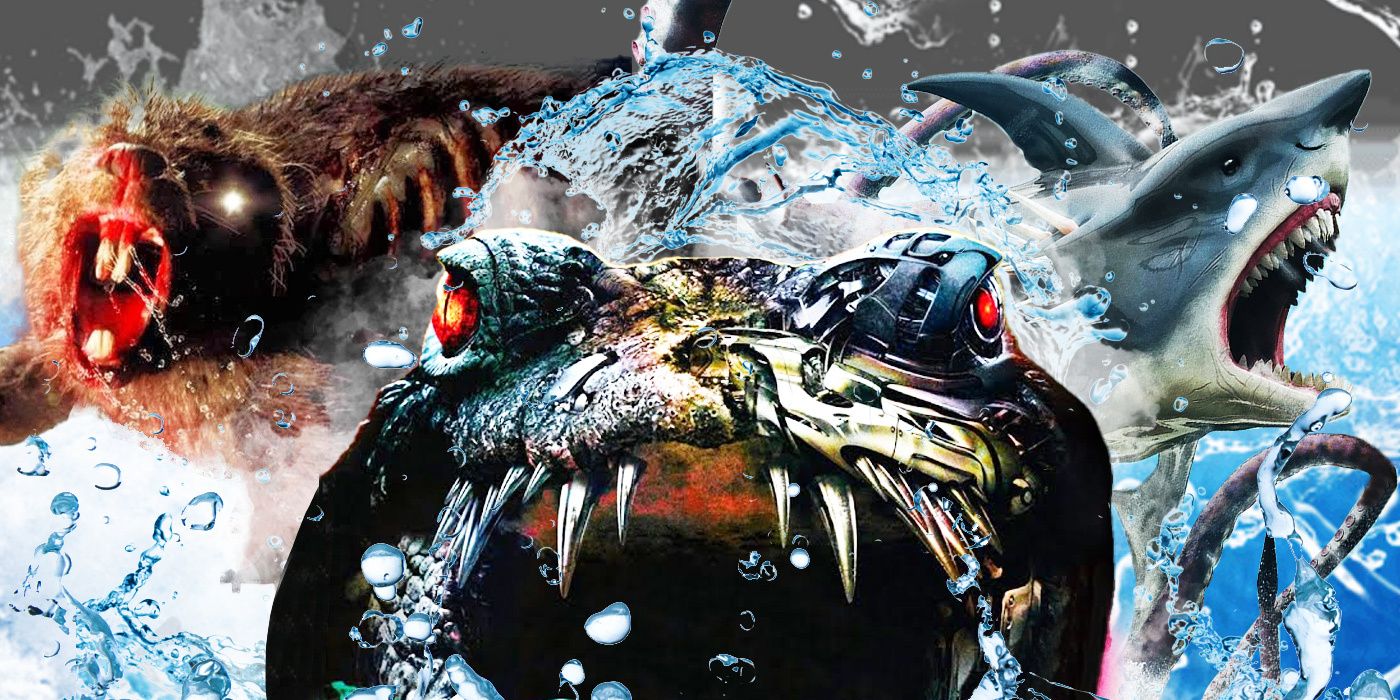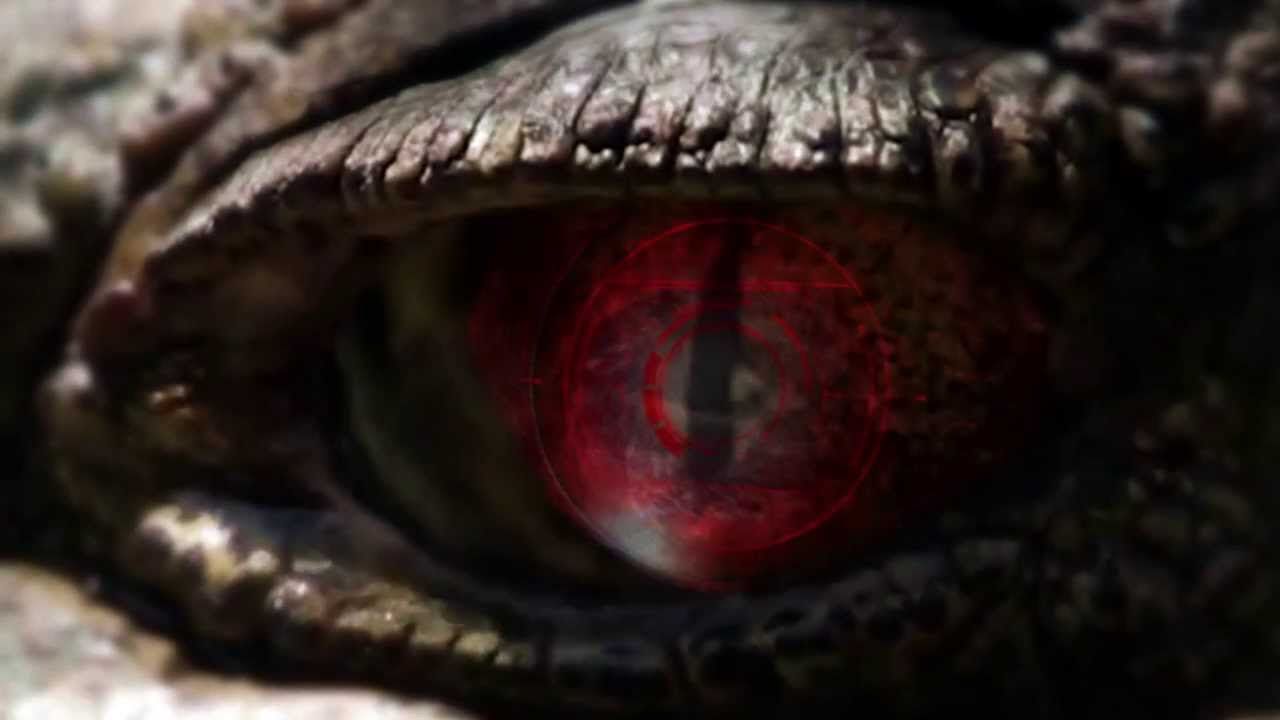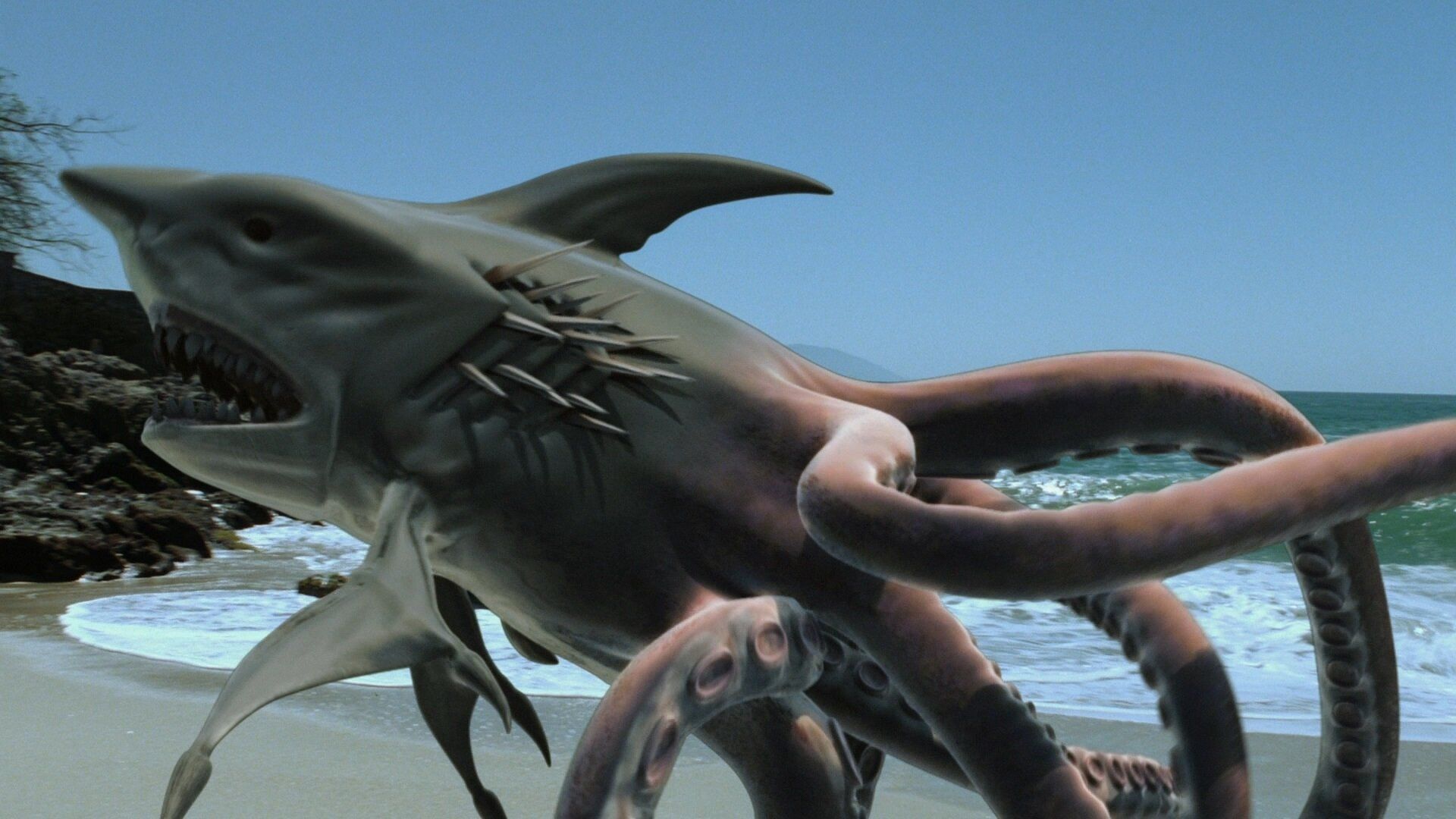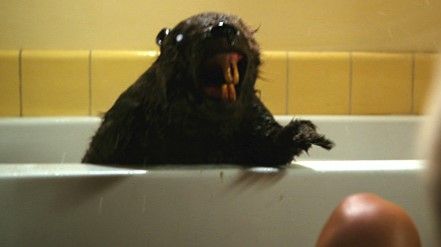Picture, if you will. You’ve just watched Robocop and Lake Placid back-to-back and thought to yourself, “If only these two masterpieces of cinema could be combined into a single film.”
Ladies and gentlemen, meet 2013’s Robocroc. And it doesn’t end there. Hollywood has long held a fascination with animal hybrids and mutants. The creatures from The Island of Lost Souls, Sharktopus, Lavalantula, and Zombeavers, to name a few. The genre even gets a shout-out on Season 2, Episode 12 of TV’s Modern Family — Croctopus in 3-D (surprisingly, not a real film). While there are a handful of artistic, more highbrow representations — David Cronenberg's The Fly comes immediately to mind — mutant/hybrid fare is most often associated with schlock, B-movie, direct-to-video and/or streaming films. It's akin to watching a train wreck. You know it's going to be horrible, you know Meryl Streep is not likely to be in it, but you just simply need to see how bad it truly is for yourself.
Hybrid creature features are those films that take two completely different beasts and mash them together to create something entirely new. 2012's Piranhaconda is an excellent example of an organic hybrid movie. Scientists search the jungles of Hawaii trying to find the eggs of the half-piranha, half-anaconda hybrid (hence, the name: there's not a lot of originality in titling films like this) that lives within, unaware that the enormous creature is stalking them and a film crew that also happens to be on scene.
Then there are hybrids created by man. Take 2010's Sharktopus, one of the first films in the current golden age of the genre. The U.S. Navy attempts to create a hyper-weapon, combining shark and octopus DNA to create the sharktopus, a beast with the head of a shark and the tentacles of an octopus. Shockingly, the dangerous hybrid escapes and begins terrorizing the water of Puerto Vallarta, Mexico. The success of Sharktopus led to two sequels: Sharktopus vs. Pteracuda, where another hybrid intended for military use — pteradactyl with barracuda — escapes; and Sharktopus vs. Whalewolf, where a mad scientist mixes the genes of a killer whale and a wolf to create the Whalewolf.
Somewhat in the same vein is a sub-genre of the hybrid creature film: killer shark meets the insentient. The infamous Sharknado (2013) brings together sharks and tornados, spreading sharks inland to wreak havoc. This highly extremely unlikely meeting of two worlds would spawn five sequels and resurrect the careers of Tara Reid and Ian Ziering. Avalanche Sharks (2014) features snow sharks, "swimming" in an avalanche, attacking skiers. This was predated by 2012's Snow Shark: Ancient Snow Beast, which also has a snow shark but doesn't have the double-whammy of an avalanche to go with it. If sharks in snow seems highly unlikely, then ones that can swim through sand should be far more plausible, like Sand Sharks (2012). A shark that spreads a new virus world-wide, SHVID-1 (really?), is the antagonist in Virus Shark (2021).
Mutant films highlight creatures that have mutated into something far more dangerous. Some become simply larger, like the giant man-eating ants from 1954's Them! Some develop additional features, like an extra shark head as seen in 2-Headed Shark Attack (2012), followed by 3-Headed Shark Attack (2015), 5-Headed Shark Attack (2017), 6-Headed Shark Attack (2018), and, soon, 7-Headed Shark Attack (which all probably have stories, but pretty sure they take a back seat). Finally, the mutants that gain destructive abilities. Lavalantula (2015) features large, lava-breathing tarantulas, unleashed on Los Angeles by volcanic eruptions. Dragon Wasps from 2012 has soldiers in Belize up against giant fire-breathing, cocaine-addicted wasps. Like wasps didn't flat out suck in the first place. And we can't leave out the granddaddy of them all, a little prehistoric sea monster mutated by nuclear radiation that we first meet in 1954's Godzilla. On a technicality, Mega Shark Versus Giant Octopus (2009) does not count as both creatures are large, prehistoric beasts, not mutants (but great movie, so we'll slide it in here anyway).
Then there's a final category in the genre: the WTFs. These films embrace hybrids and mutants that are so out there that while they do fit in the categories above, the results even have people involved in the aforementioned movies left saying, "What the fresh h-e-doublehockeystix did I just see?" Zombeavers from 2014 follows a group of college kids that are attacked by — yep — zombie beavers, mutated by a toxic chemical spill. 2004's Dead Meat from Ireland is a lesson in adhering to health and safety rules, after a farmer feeds his cattle animal remains in blatant disregard of such rules. This leads to a zombie strain of Mad Cow Disease, with zombified cows eating humans and turning them into zombies themselves.
Hm... zombie beavers versus zombie cows ... who wins that match?
Robocroc sees an experimental rocket land by a crocodile habitat, the home of "Stella," our titular character, as it were. The rocket contains nanotechnology, which finds its way into the crocodile's food, slowly changing the beast into Robocroc. The cybernetic croc enters a water park, feasting on teens before the military arrives... but someone in the military might just be helping Stella for nefarious purposes! The VelociPastor (2017) sees Catholic priest Doug Jones (Gregory James Cohan) get infected by an ancient artifact, said to turn people into the Dragon Warrior. Sure enough, Jones gains the power to mutate into a dinosaur and back. Also includes a camp of drug-dealing Christian ninjas. Bet you never thought you'd see that string of words together.
The appetite for these films shows little sign of slowing down any time soon, with the most recent addition to the long list of hybrid films coming in June 2022 — Sharkula, where the curse of Count Dracula turns a shark into a vampire. More frightening? The meshing of classic movie monster with killer shark has already been done, with 2016's Sharkenstein, an unholy blend of parts from great sea-killers formed into the Sharkenstein monster.
You can't make this type of stuff up.




